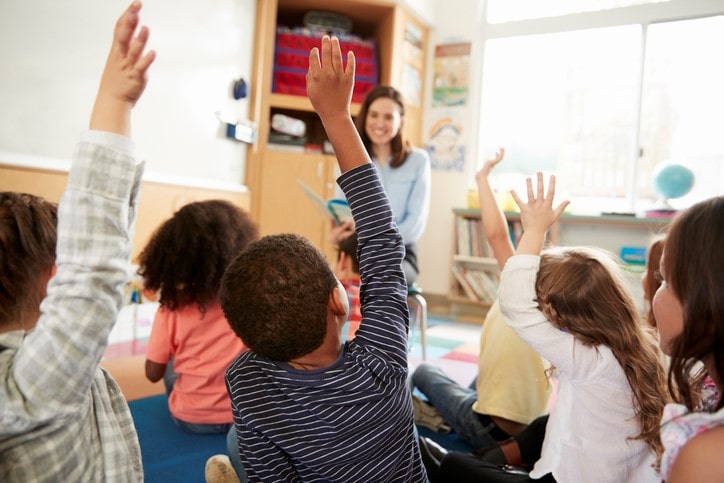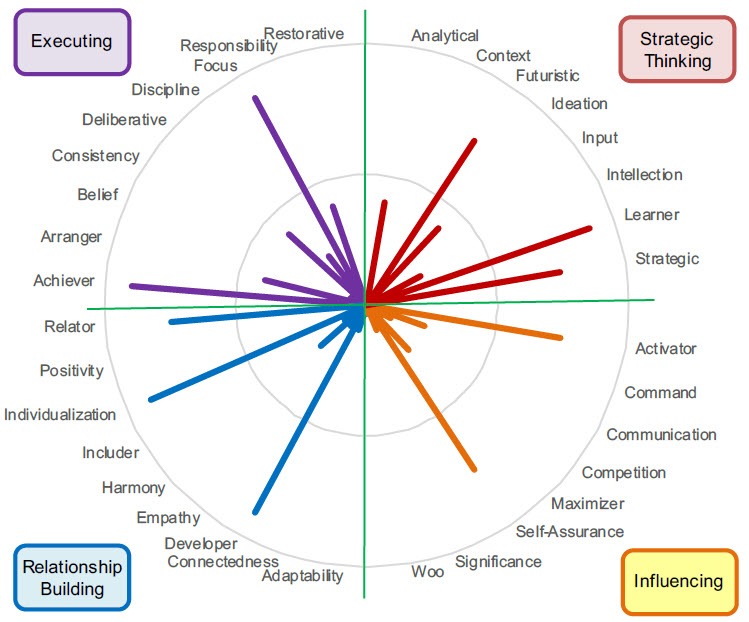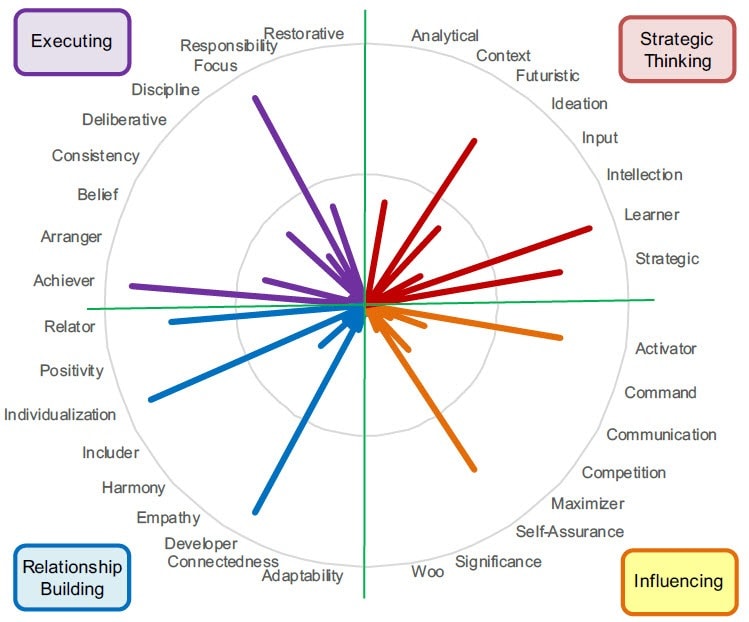Embracing the Intangibles
Teaching Empathy and Engagement
By NAfME Member Paul K. Fox
This article originally appeared on Paul Fox’s blog here.
Admittedly, if we keep piling on more mandates for earning a teaching degree and professional certificate, our music education majors would have to continue several more years at the university. What has been added to the forefront of education? You name it: “backwards-designed curriculum,” ethics, the “four C’s” (creativity, critical thinking, collaboration, and communication), Common Core, social-emotional learning, special education, new technology, etc. We are already wrestling with the limits of time to cover a mastery of personal musicianship and artistry to find space to “squeeze in” at least a cursory study of the other more abstract but important “soft skills” of character development, cultural diversity and sensitivity training, nurture of emotional health and wellness, stress management, “charismatic” leadership, time management, and . . . humanity!

“Back in the dark ages” when I attended Carnegie-Mellon University (CMU), the pathway for becoming a teacher was to complete (and pay full tuition!) five years to graduate with a Bachelor of Fine Arts degree and license to teach in the public schools. The fifth year was when we did our student teaching along with additional graduate credits applied towards a Master of Fine Arts in Music Education. This was conferred after a full year’s employment “in the field” (Year #6) and completion of additional summer courses of Philosophy in Music Education, Administration of Music Education, several more credits, and a master’s thesis addressing a self-targeted educational problem at our job. For my entire time at CMU, 80% of the coursework on my transcript was singularly focused on performance classes (lessons on piano and the “major”—mine was on viola—as well as chamber and large group ensemble rehearsals), conducting, instrumental and vocal methods, music history, sight-reading/ear training, harmony, orchestration, etc.

What’s Missing in Music Teacher Training?
It is amazing what we must learn “on our own” after we receive our diploma. Yes, I was competent to read a score, assess a solo, band, chamber group, choral, orchestra, or theatrical performance, compose/arrange and accompany a piece for a string class, coach a vocalist on warming up their voice, apply my knowledge of a composer’s life and music to interpret a masterwork, and start a new student on the cello or flute or tuba or drum! However, a quick reminiscence of “the ABCs for the 2009 opening day” agenda I presented to my music staff as their Performing Arts Curriculum Leader had little bearing on the pre-service training all of us received in higher education:
- Assessment “of” (“Summative”) and “for” (“Formative”) Learning
- Blackboard and Blended Schools
- Bloom’s Taxonomy and Webb’s Depth of Knowledge
- Curriculum Mapping and the Rubicon Atlas web program
- Customization and Differentiation of Instruction
- Essential Questions and Enduring Understandings
- Multiple Intelligences Theory
- The Pennsylvania Department of Education’s Standards-Aligned System
- Teaching the “Whole Child”
So, if I became a “superintendent for a day” (or much longer), what would I now prioritize for induction and/or in-service training of educators?

We’ll start out with a taste of the inspiration led by my mentor and former superintendent of schools of Upper St. Clair School District where I taught for 33 years, the man who probably had the greatest influence for my getting hired and seeing something in me to channel my energy towards succeeding in several challenging assignments: Dr. William A. Pope. Way back in the ’90s, Bill was a proponent for studying “the stuff of human relationships,” including the introduction of elementary and middle level units on caring/compassion, courage, empathy, honesty, kindness, sensitivity, trust, among many others.
I recently recalled many of these terms as they resonated within me during a motivating “The Presence of a Teacher” session presented by Penn State University Associate Professor of Theater Dr. Susan Russell. She opened the Pennsylvania Collegiate Music Educators Association Region III Virtual Workshop on November 1, 2020, with a Zoom discussion, brainstorming the essential tools for building every teacher’s “presence” and “connectivity” with students:
- empathy
- engagement
- enthusiasm
- listening
- personal storytelling
- self-care
- sharing
- vulnerability (acceptance to show)
A Different Kind of “Bucket List!”
Next, let’s add to this mix the easy-to-read book How Full Is Your Bucket? by Tom Rath and Donald Clifton, organized around the simple metaphor of a dipper and a bucket. Their work is grounded in 50 years of research and will show you how to greatly increase the positive moments in your work and your life—while reducing the negative—which, of course, can be applied to benefit your interactions with students (of paramount importance!), their parents, and school staff.
Admittedly, at times, this may be difficult. As I sit here putting on the finishing touches to a lesson plan for a virtual rehearsal of my online music academy: How does one find “positivity” or project an image of hope? What’s that saying? “When the going gets tough, the tough get going!”
A “Thoughtful Drop” from a “Full Bucket” would emphasize the
- Focus on the positive
- Sharing of frequent small positive acts daily
- Positive reinforcement to motivate learning
- Promotion of positive emotions for your own good health
“How did you feel after your last interaction with another person?”
“Did that person – your spouse, best friend, coworker, or even a stranger—‘fill your bucket’ by making you feel more positive? Or did that person ‘dip from your bucket,’ leaving you more negative than before?”—from How Full Is Your Bucket?
You can even take their Gallup Clifton Strengths poll to understand your “personality DNA” (above) and assess your potential.
Raising Caring, Successful Kids in a “Plugged-In, Trophy-Driven World”
In any discussion on what children need most, are you surprised that the word “empathy” keeps coming up? We turn to, in my opinion, “the single most revolutionary book of our time,” UnSelfie—Why Empathetic Kids Succeed in Our All-About-Me World by Michele Borba, Ed.D., with her framework of nine essential habits of empathy:
- Emotional Literacy(recognition of the feelings and needs of self and others)
- Moral Identity(adoption of caring values that guide integrity and activate empathy)
- Perspective Taking(appreciation of another person’s feelings, thoughts, and views)
- Moral Imagination(use of literature, films, and emotionally charged images as a source of inspiration to feel with others)
- Self-Regulation(management of strong emotions and reduction of personal distress)
- Practicing Kindness (increased concern about the welfare and feelings of others)
- Collaboration(working together in the achievement of shared goals)
- Moral Courage(resolution to speak out, step in, and help others)
- Altruistic Leadership(motivation to make a difference for others)
 Michele Borba emphasizes that the “selfie syndrome” is leading to excessive “self-promotion, personal branding, and self-interest at the exclusion of others’ feelings, needs, and concerns. It’s permeating our culture and slowly eroding our children’s character.” In short, she charges educators and parents alike to focus on enhancing the children’s “social-emotional competencies, resilience, academic success, leadership, healthy relationships, moral courage, happiness and mental health.”
Michele Borba emphasizes that the “selfie syndrome” is leading to excessive “self-promotion, personal branding, and self-interest at the exclusion of others’ feelings, needs, and concerns. It’s permeating our culture and slowly eroding our children’s character.” In short, she charges educators and parents alike to focus on enhancing the children’s “social-emotional competencies, resilience, academic success, leadership, healthy relationships, moral courage, happiness and mental health.”
I wrote this article for PMEA News about this phenomenon, examples of my impressions of the “dumbing down” or numbing of emotional quotient, less focus on “team” orientation, omission of studying “character” in our schools, and the seemingly increased emphasis on “the me—not the we!”
“Social-emotional learning” (SEL) was not a part of a college music education course catalog, even a few years ago. And yet, today more than ever, it is probably the single most valued “teaching skill” necessary for the care and engagement of students during the pandemic. Educators are “leaders” and often have a lasting influence (maybe only second to their parents) on the social-emotional health of their “charges!” Let’s review the principles of emotional intelligence (EI):
“Most effective leaders have a high degree of emotional intelligence: self-awareness, self-regulation, motivation, empathy, and social skills.”—United Nations Staff College and What Makes a Leader? by Daniel Goleman
Why Is SEL So Important?
SEL provides a foundation for safe and positive learning, and enhances our students’ ability to succeed in school, careers, and life.
Social and emotional learning (SEL) is the process through which children and adults acquire and effectively apply the knowledge, attitudes, and skills necessary to understand and manage emotions, set and achieve positive goals, feel and show empathy for others, establish and maintain positive relationships, and make responsible decisions.
SEL can provide students with the SKILLS to confront their challenges by being self-aware, socially aware, and to make responsible decisions. According to Associate Professor of Music, Music Education Chair, and Director of Bands at Lake Forest College Dr. Scott Edgar, this may take the form of reflection, discussion, and lecture, but to be most effective, it needs to be embedded in curriculum.
“For me, the music teacher can do this in a much more authentic way—through music . . . SEL should not feel like one more thing; it is THE thing. We teach music; we teach self-discipline; we teach collaboration. SEL is in our classrooms already; our job is to make it explicit, consistent, and structured.”—Dr. Scott Edgar
According to Edgar, music teachers can help teach SEL by:
- encouraging students to set their own musical goals
- devising solutions for individual or group errors (instead of us always giving the answers)
- navigating performance anxiety
- understanding the power of music for social change

“Music education helps our students learn how to be dedicated, to persevere, and to work together. It is our job to help students see that these skills are not isolated to the music classroom. These are the skills they need to be successful outside of music and to confront their challenges with strength and skill. Music can be the preventative mental health our students need so they have the skills to confront the life challenges ahead of them.”—Dr. Scott Edgar
For a full understanding of SEL, it might be best to review the well-known “CASEL Wheel” (shown above). I also suggest you download this PDF file.
We have many additional resources to peruse for developing SEL:
- Seven Mindsets: How to Talk to Students during COVID-19
- Teaching SEL: Powering Up Students with Social and Emotional Know-How by Sucheta Kamath
- Utilizing Social Emotional Learning for Reflection and Growth by Scott Edgar, Andrew Morrison, and Bob Morrison
- Why Social and Emotional Learning Is Essential for Students by Roger Weissberg

When COVID-19 crashed into our lives wreaking havoc to almost all forms of live/in-person instruction, quarantining elements of the population, enforcing isolation and social-distancing requirements, closing schools and even cancelling most close-collaborative artistic ventures (music lessons, rehearsals, concerts, musicals, etc.), educators everywhere looked for a way to reconnect with their kids . . . and settled for the less-than-satisfactory, latency-prone, desensitizing virtual-conference environment! Overnight, schools and teachers resorted to “very” remote models of online learning only to view rows and rows of faces of their students in windows of Zoom, Google Meet, or GoToMeeting platforms.
It’s time to retool and revamp. The most important thing we can do right now is to reach-out to, re-engage, and re-energize our music students, find out how they are doing, foster moments of meaningful dialogue, and share (there’s that word again) empathy . . . and that we care. We need to immerse ourselves into and apply the principles of human relationships, teacher presence, “bucket drops,” and recommended habits of empathy, EI, and SEL explored above by a few wise educational leaders (a.k.a. “our models”).
About the author:
 Paul K. Fox, a NAfME Retired Member, is Chair of the PMEA State Council for Teacher Training, Recruitment, and Retention. He invites you to peruse his website.
Paul K. Fox, a NAfME Retired Member, is Chair of the PMEA State Council for Teacher Training, Recruitment, and Retention. He invites you to peruse his website.
Did this blog spur new ideas for your music program? Share them on Amplify! Interested in reprinting this article? Please review the reprint guidelines.
The National Association for Music Education (NAfME) provides a number of forums for the sharing of information and opinion, including blogs and postings on our website, articles and columns in our magazines and journals, and postings to our Amplify member portal. Unless specifically noted, the views expressed in these media do not necessarily represent the policy or views of the Association, its officers, or its employees.
August 26, 2021. © National Association for Music Education (NAfME.org)
The post Embracing the Intangibles: Teaching Empathy and Engagement appeared first on NAfME.





